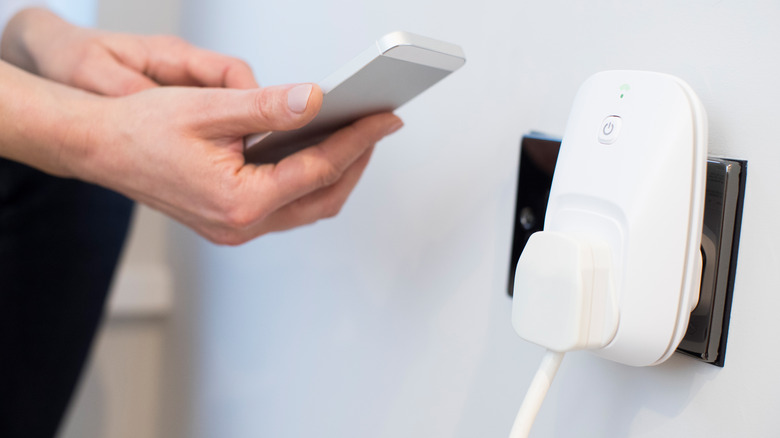Do Smart Plugs Use Energy While They're Off? Here's What You Need To Know
More and more people are looking for ways to make their homes smarter, and one way they're doing that is by using smart plugs. These plugs have become an easy way to control electronics remotely, even those that aren't smart by design. There are all sorts of creative ways you can use smart plugs in your home, with one of their biggest selling points being the promise they'll help cut energy costs.
However, you may be surprised to learn these handy devices use electricity themselves, even when the device they're controlling is turned off. The reason for this energy use is pretty simple: Smart plugs must stay connected to your home's Wi-Fi network so they can receive commands, respond to app inputs, and follow scheduled routines. That means they're always on in some capacity, even when it looks like they're off.
However, the amount of energy they consume when in standby is minimal and not enough to have much of an impact on your electricity bill. In fact, most smart plug models only draw about 1 watt of power while idle, which adds up to only a few kilowatt-hours per year for a grand total of just over a dollar a year, depending on the energy rates where you live. While there's no question this energy usage is relatively low compared to other household devices, if you're using several smart plugs in your home, you might want to get an idea of how that energy adds up, especially if they're connected 24/7.
Smart plugs draw a small amount of power even when off
How much energy a smart plug uses in standby will vary from one model to the next, but the average consumption hovers around 1 watt of power when they're not in use, which adds up to roughly 8.76 kilowatt-hours (kWh) per plug or about $1.44 annually, based on the U.S. average electricity rate of 16.44 cents per kWh. What it comes down to is that even the best smart plugs consume a minimal amount of power when off, and there's no workaround for that. This small amount of energy usage allows them to perform their smart functions.
While that may not sound like much, it's important to consider that many newer devices draw less power in standby mode than the plugs themselves. For example, the PlayStation 5 in Rest Mode draws just 0.31 watts, and Samsung's 2024 OLED S90D TV uses only 0.5 watts in standby. As a result, when you use a smart plug with these newer, energy-efficient electronics, they may slightly increase overall power consumption, since the plug itself can draw more standby power than the device it's controlling.
Older electronics will have higher "phantom" or "vampire" loads — the power consumed when in standby mode – so, smart plugs can actually help you save money when you schedule the devices connected to your smart plugs to power down or use an app to turn them off remotely.

